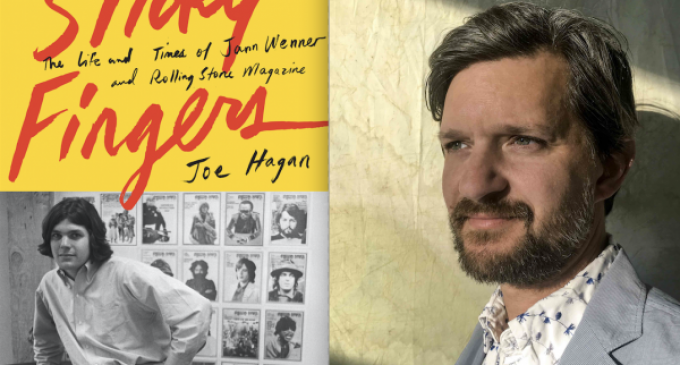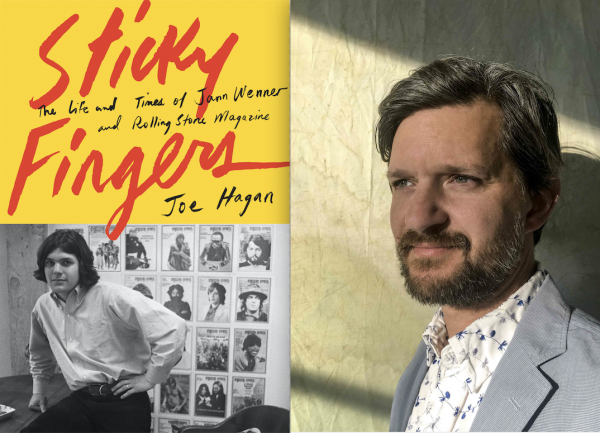Boy Wonder of the Rock Press | The East Hampton Star

“Sticky Fingers”Joe Hagan Knopf, $29.95 “Jane got the house on West Seventieth Street and the estate in the Hamptons, plus the Picasso and her beloved Diebenkorn, now worth millions. Wenner was stung by the loss of the Hamptons home . . . but afterward he married Nye and built him a $12 million beach house in Montauk next to Ralph Lauren.” This succinct paragraph, atop page 498 of Joe Hagan’s “Sticky Fingers: The Life and Times of Jann Wenner and Rolling Stone Magazine,” is one of the more revealing in a tome bursting with them. The biographer, whom the co-founder of Rolling Stone hired and with whom he sat for multiple interviews and shared abundant documents and correspondence — and with whom he is reportedly no longer on speaking terms — presents Jann Simon Wenner, master chronicler of his fellow baby boomers, as a brilliant, hugely ambitious, and deeply insecure man riven by contradictory impulses. For in “Sticky Fingers” — like the magazine’s title, a once-removed reference to the Rolling Stones — Mr. Wenner is at once starry-eyed idealist and back-stabbing opportunist, rambunctious revolutionary and calculating capitalist. As a 21-year-old San Franciscan in 1967, he synthesized the best of the nascent underground media, presenting to America’s youth high-quality journalism about the counterculture and the musicians who created its soundtrack. But as a 40-ish millionaire, he acquired Us, then a biweekly purveyor of celebrity gossip that he would promote as the “wide, wide world of what’s hot.” In fairness, though, Mr. Wenner, like his magazine, reflects his generation: By the time of the Us acquisition, many of Rolling Stone’s initial audience were “much more blatant in the pursuit of status than they were in the Seventies and Sixties,” the author Tom Wolfe told the magazine in 1987. Also characteristic of his generation, Mr. Wenner’s indulgence in drugs and alcohol added fuel to the countercultural blaze he fanned; Mr. Hagan depicts Rolling Stone’s offices and Mr. Wenner’s residences as dens of endless debauchery. Mr. Wenner and his then-wife, the former Jane Schindelheim, whose parents were among the magazine’s initial investors, fight, cheat, make up, and repeat, each at times disappearing into drug-addled fogs of depression and paranoia. In Mr. Hagan’s telling, the couple exemplifies a generation once striving toward a utopian dream but ultimately shambling into decadence.As rock ‘n’ roll superfan, Mr. Wenner, “an inveterate social climber,” relentlessly fought his way to the epicenter of popular culture, yet, in Mr. Hagan’s portrayal, relationships with his heroes are almost always complicated. Much is made of Mr. Wenner’s fixation on Mick Jagger: What could have been a perfect symbiosis, the author asserts, was instead marked by business and editorial disputes with the Rolling Stones’ singer (interspersed with five decades’ hagiography of the self-proclaimed greatest rock ‘n’ roll band in the world). Mr. Hagan depicts a moving scene in which his subject and John Lennon, leader of Mr. Wenner’s supreme heroes, the Beatles, and their wives sit together in a San Francisco cinema in the spring of 1970. Lennon, who adorned the cover of Rolling Stone’s first issue, “had tears running down his cheeks” as the group watched the Beatles’ last public performance, an unannounced lunchtime gig on the roof of their London offices, in the film “Let It Be.” “For Wenner, the twenty-four-year-old boy wonder of the new rock press, who worshipped the Beatles as passionately as any kid in America, this was a dream, sitting here in the dark, wiping away his own tears,” Mr. Hagan writes. At the same time, however, Mr. Wenner “found the proximity to John Fucking Lennon as intoxicating as a drug.” And as with drugs, Mr. Wenner could not restrain himself, Mr. Hagan contends. While “Lennon Remembers,” an exhaustive interview in which the embittered musician heaped criticism on the Beatles while promoting his new album, would boost the visibility and sales of consecutive issues in early 1971, Lennon asserted ownership of the interview and rebuffed Mr. Wenner’s requests to publish it in book form. “Wenner’s interests, however, now diverged from his idol’s,” Mr. Hagan writes. “He went ahead and published ‘Lennon Remembers’ in the fall of 1971, collecting $40,000 from a publisher.” The two never saw each other again. Mr. Hagan devotes ample attention to another duality that has defined Mr. Wenner. A latent homosexuality that he was once eager to obscure manifested in multiple affairs throughout his life, finally emerging dominant in 1993 when he “became enraptured by a young fashion designer named Matt Nye.” Two decades his junior, Mr. Nye “unleashed Jann Wenner’s appetites like never before.” When same-sex marriage was legalized in New York in 2011, Mr. Wenner “had to carefully persuade” his devastated wife to give him a divorce so that he could marry the man for whom he had abandoned her. “He was the polymorphous paterfami
Source: Boy Wonder of the Rock Press | The East Hampton Star




There are no comments at the moment, do you want to add one?
Write a comment